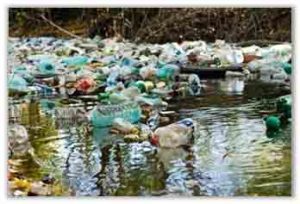It is evident that many people are not conscious of the intimate relationship between our health and the environment. The quality of our environment has a huge impact on our health. Our environment exposes us to physical, chemical and biological factors which can affect our health.According to the World Health Organisation (WHO), 13 million deaths annually are due to preventable environmental causes. Reducing environmental risk could save as many as four million children’s lives a year especially in developing countries. Moreover, we contribute to the state of our environment, which essentially means we have an impact on our health. There are several environmental parameters which influence our health, some major ones are:
Indoor air quality
 Indoor air quality refers to the air quality within and around buildings and structures such as our homes, schools or offices. Generally, air quality becomes a problem when air contains dust and offensive odours, chemical contaminants, dampness or mould.
Indoor air quality refers to the air quality within and around buildings and structures such as our homes, schools or offices. Generally, air quality becomes a problem when air contains dust and offensive odours, chemical contaminants, dampness or mould.
In the workplace and at school, occupants can be exposed to emissions from office machines, cleaning products, carpets and furnishings, perfumes, cigarette smoke, water-damaged building materials, microbial growth (fungal, mould, and bacterial), insects, and outdoor pollutants. Poor indoor air quality has been linked to headaches, fatigue, trouble concentrating, and irritation of the eyes, nose, throat and lungs.
Homes which use open fires, solid fuels (wood, charcoal, crop wastes), or traditional stoves, e.g., kerosene stoves, for cooking are exposed to pollutants such as fine particles and carbon monoxide. Exposure to such indoor air pollution that has been linked to many diseases, in particular, pneumonia among children and chronic respiratory diseases among adults. This problem is exacerbated in houses/kitchens which have poor ventilation.
Since we spend about 80-90% of our time inside buildings our exposure to harmful indoor pollutants can be serious. In addition, some exposures, such as asbestos and radon, do not cause immediate symptoms but can lead to cancer after many years. Therefore we ought to be conscious of our internal surroundings. Proper ventilation is a simple but effective way of reducing our exposure to harmful pollutants in the indoor setting.
Outdoor air quality
 Air pollution is a constant factor that continues to pose a significant threat to health worldwide. Air pollution comes from many different sources: stationary sources such as factories, power plants, and smelters and smaller sources such as dry cleaners and degreasing operations; mobile sources such as cars, buses, planes, trucks, and trains; and naturally occurring sources such as windblown dust, and volcanic eruptions. Air quality can be affected in many ways by the pollution emitted from these sources. Like indoor air pollution, outdoor air pollution also contributes to respiratory diseases, irritation of the eyes, nose, and throat, lung and heart problems, such as asthma and increased risk of heart attack.
Air pollution is a constant factor that continues to pose a significant threat to health worldwide. Air pollution comes from many different sources: stationary sources such as factories, power plants, and smelters and smaller sources such as dry cleaners and degreasing operations; mobile sources such as cars, buses, planes, trucks, and trains; and naturally occurring sources such as windblown dust, and volcanic eruptions. Air quality can be affected in many ways by the pollution emitted from these sources. Like indoor air pollution, outdoor air pollution also contributes to respiratory diseases, irritation of the eyes, nose, and throat, lung and heart problems, such as asthma and increased risk of heart attack.
At times we contribute to air pollution by burning our garbage. Although many think this is an effective way of disposing of garbage, burning actually results in the release pollutants like carbon dioxide, mercury and acid into the atmosphere which damage the environment and also contribute to respiratory diseases.
Water and sanitation
 The quality of water, whether used for drinking, domestic purposes, food production, manufacturing or recreational purposes can affect our health. Water of poor quality can cause disease outbreaks. According to the WHO, contaminated water serves as a mechanism to transmit communicable diseases such as diarrhoea, cholera, dysentery, typhoid and guinea worm infection. The way we dispose of our waste significantly influences our water quality. Specific types of waste are especially risky, e.g., sewage, pesticides, plastics and Styrofoam. Even when disposed of on land, waste usually makes its way into waterways which we depend on for various purposes. So to ensure our water quality is not compromised we ought to take it on ourselves to dispose of our waste in a proper manner. Remember at the EPA we are here to help you improve your environment and your health. Visit our website, call us or follow us on facebook.
The quality of water, whether used for drinking, domestic purposes, food production, manufacturing or recreational purposes can affect our health. Water of poor quality can cause disease outbreaks. According to the WHO, contaminated water serves as a mechanism to transmit communicable diseases such as diarrhoea, cholera, dysentery, typhoid and guinea worm infection. The way we dispose of our waste significantly influences our water quality. Specific types of waste are especially risky, e.g., sewage, pesticides, plastics and Styrofoam. Even when disposed of on land, waste usually makes its way into waterways which we depend on for various purposes. So to ensure our water quality is not compromised we ought to take it on ourselves to dispose of our waste in a proper manner. Remember at the EPA we are here to help you improve your environment and your health. Visit our website, call us or follow us on facebook.
Sources:
http://www.who.int/indoorair/en/
https://www.epa.gov/indoor-air-quality-iaq/introduction-indoor-air-quality
http://www.explainthatstuff.com/waterpollution.html
Share your ideas and questions by sending letters to: “Our Earth, Our Environment”, C/O EIT Division, Environmental Protection Agency, Ganges Street, Sophia, GEORGETOWN, or email us at: eit.epaguyana@gmail.com












